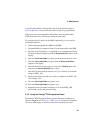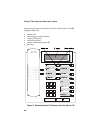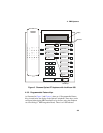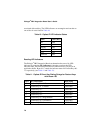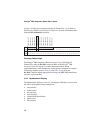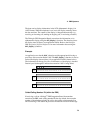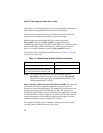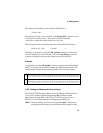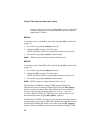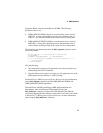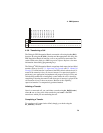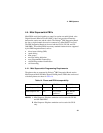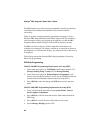
4. PBX Systems
The display when the Ring comes in and the LED flashes is:
“Call for: 108 ”
The display shows the correct called ID. If the d42_gtcallid( ) function is used
to retrieve the call ID, it returns _108, which is not in the expected
<called ID>_<caller ID> format (in this case, 108_109).
When the port answers, the display shows the correct caller ID as follows:
Ch 01 LCD = “109 Consult? >”
Therefore, an alternative to using the d42_gtcallid( ) function to retrieve the
caller ID, which gives incorrect results, is to use the d42_display( ) function
to retrieve the display, then parse the display to extract the caller ID.
Example
An application uses the d42_gtcallid( ) function to retrieve the calling number
ID for a call received on a specified channel on a PBX integration board. The
calling number ID data and corresponding ASCII values are shown below.
text
bb 2 2 1 _ 2 2 4
data
20 32 32 31 5F 32 32 34 xx xx xx xx xx xx xx xx xx xx xx xx xx xx xx xx
byte
0 1 2 3 4 5 6 7 8 9 10 11 12 13 14 15 16 17 18 19 20 21 22 23
text
data
xx xx xx xx xx xx xx xx xx xx xx xx xx xx xx xx xx xx xx xx xx xx xx xx
byte
24 25 26 27 28 29 30 31 32 33 34 35 36 37 38 39 40 41 42 43 44 45 46 47
4.3.5. Setting the Message Waiting Indicator
The Dialogic
®
PBX Integration Board can set the Message Waiting Indicator
(on or off) on another extension using the dx_dial( ) function and the
appropriate dial string. Refer to the Dialogic
®
PBX Integration Software
Reference
for more information about dialing programmable keys.
NOTE: Message Waiting can also be set using the dx_dial( ) function and
the appropriate dial string to press the Feature Key assigned to send
75



